A monarch butterfly caterpillar at the Runestone Park remnant which is abundant with milkweed, his favorite snack.
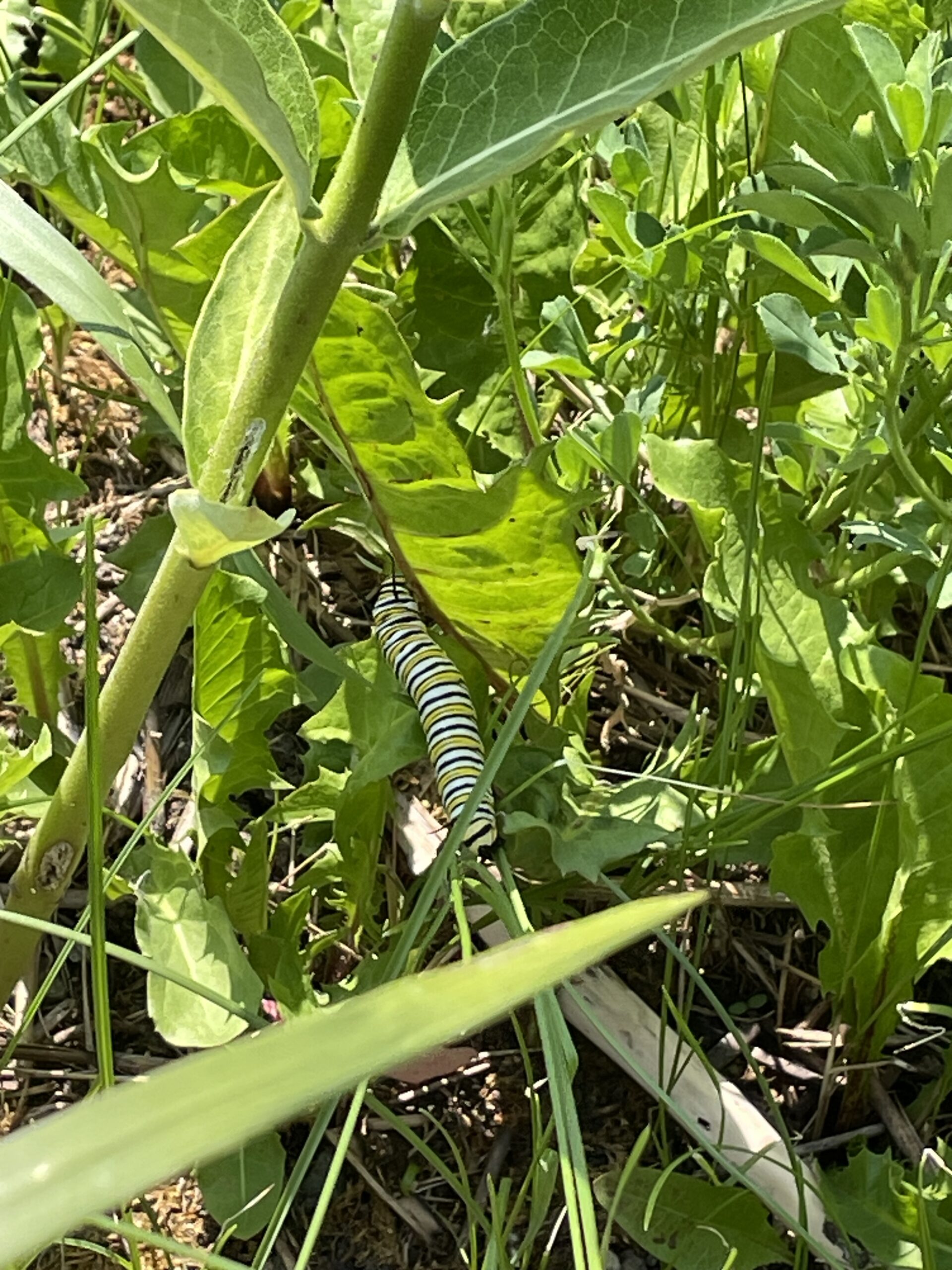
|
||||
|
A monarch butterfly caterpillar at the Runestone Park remnant which is abundant with milkweed, his favorite snack.  I spent the day searching for echinacea seedlings in our seed addition transects. With the help of Lindsey and advice from other seasoned experts, I have complied a list of tips and tricks that will lead to highly accurate data collection. DO: Upon arrival at a segment, announce yourself to the echinacea. Why have you come here and what are you doing? Consider making an offering. Perhaps an invitation to collaborate in future studies, or the opportunity to review any relevant manuscripts. Be gentle when combing through their home. Clumsy fingers lead to broken echinacea and broken hearts. Of course, search actively! Change your angles and consider the topography. But also, let the echinacea find you. Never stab your toothpick into an echinacea root. I think this needs no explanation. Before your final sweep, verbally announce that you are done looking. This will most likely lead to the instant detection of one more plant. We can’t explain it, but it happens. Say your goodbyes before heading off. Offer words of encouragement to the seedlings as they, too, have a long summer ahead.
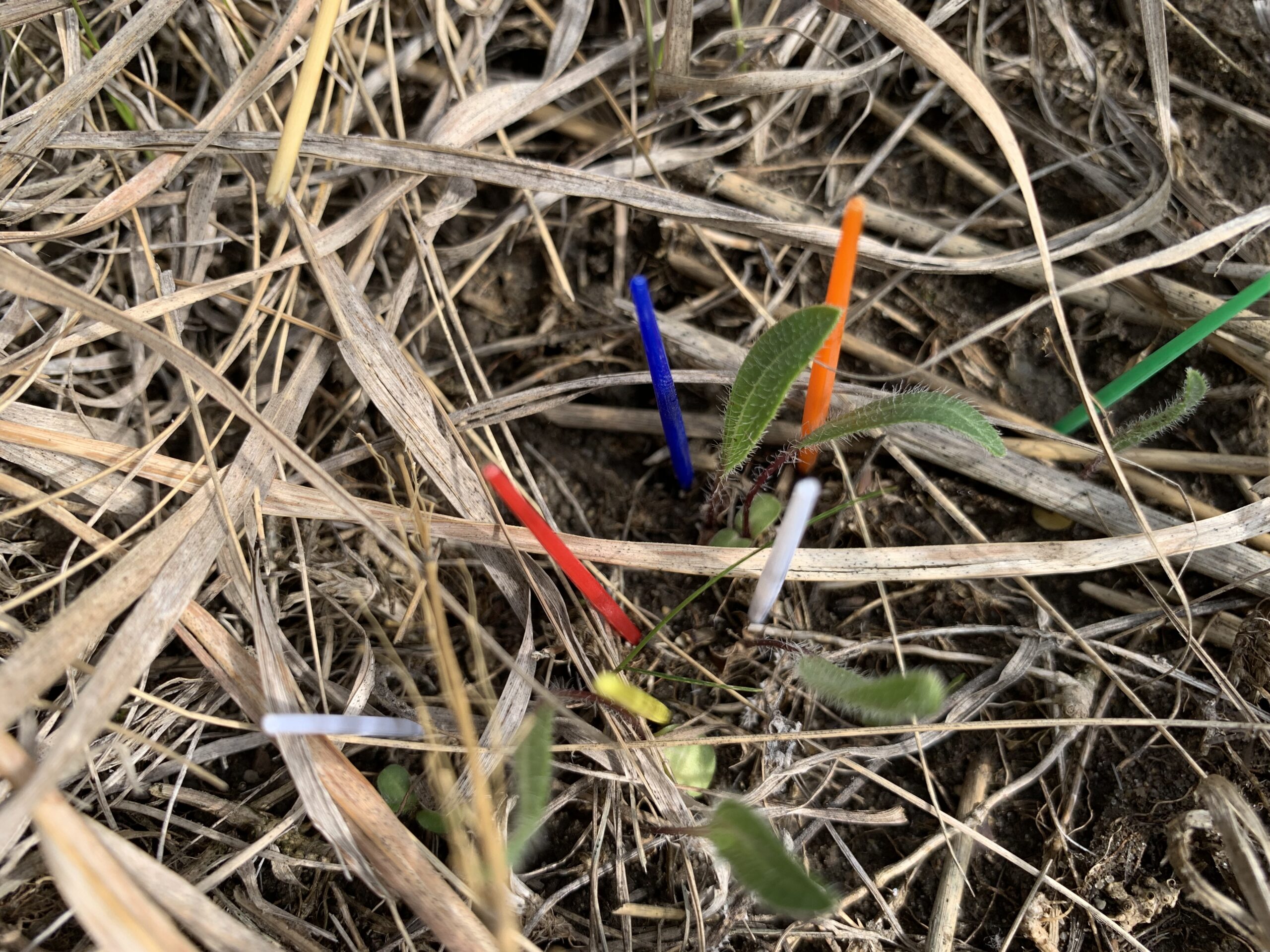 Slow start this morning drinking water as we waited for rain to pass so we could continue shooting ENRTF GPS points (we forgot it’s raincoat). After lunch we continued with more of the same work and saw some Heliopsis helianthoides conspiring with bees. 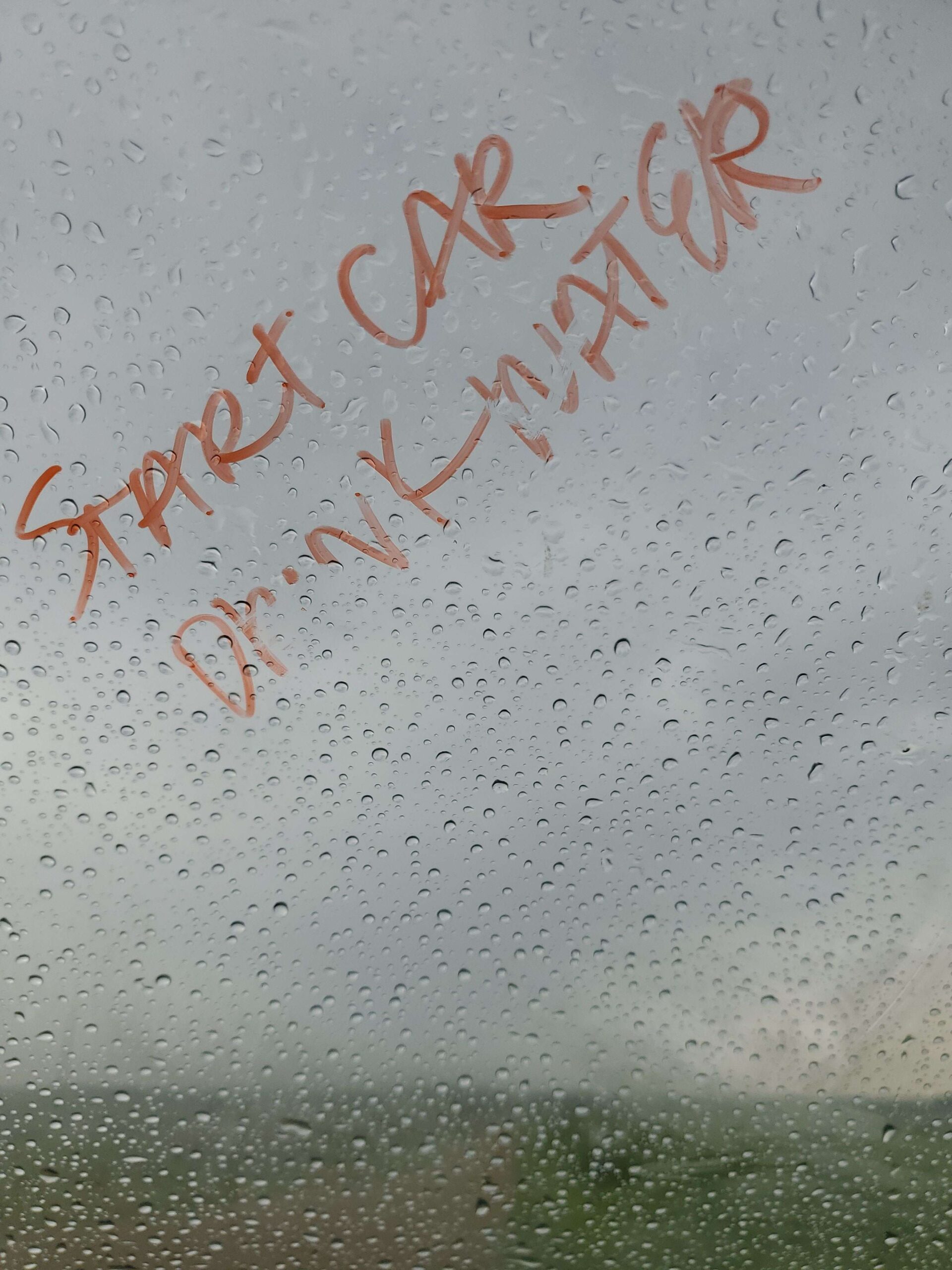 We started early today to beat the heat but instead were greeted with a cloudy and cool morning. Right off the bat, I started the morning by continuing to take some GPS points for the ENTRF-funded bee research project. While I was enjoying taking points in a site with minimal hills… other groups did not have the same experience. Public enemy #1 (Geese) showed their true colors by showering El with some “love”. 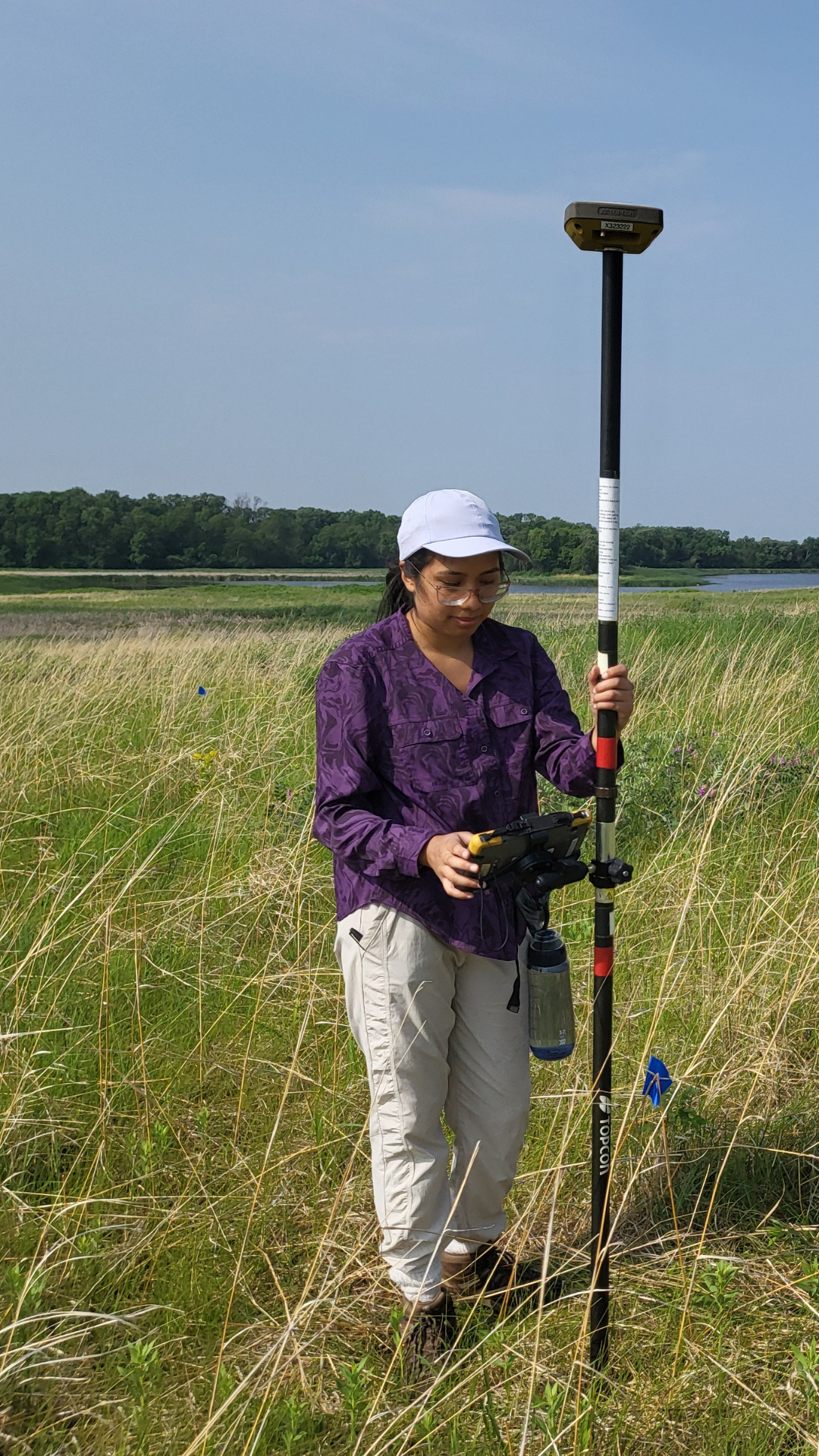  After lunch, I learned how to take samples of the amount of light available along some of our transects using a light meter. My biggest trouble was finding all of our nails in the ground! 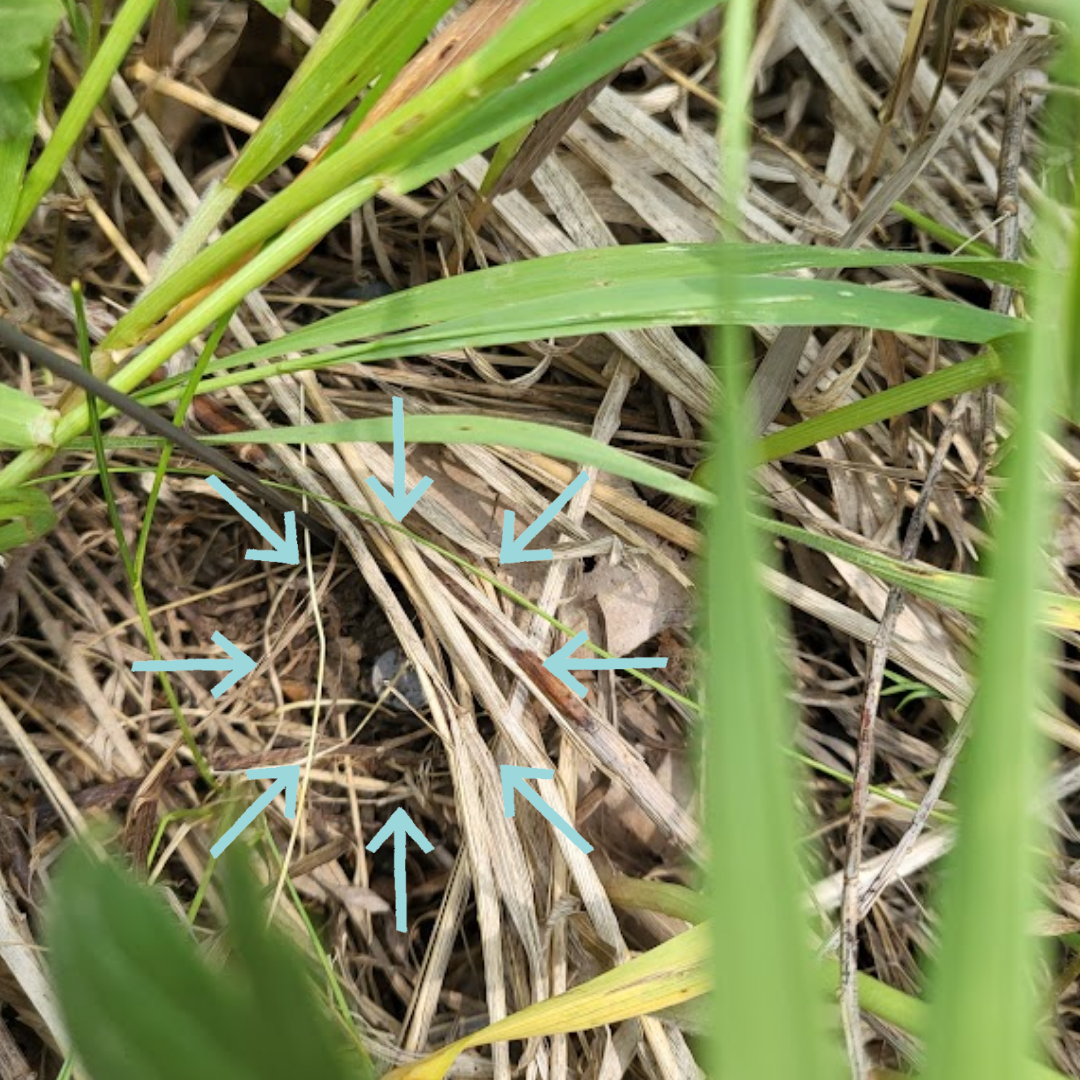 Lots of tasks today, one of which was sampling the amount of light available along some of our transects using a light meter!  These transects are part of our seeding experiment, and we added some lovely markers to help us spot some sprouting echinacea!  We also continued to establish new points for our upcoming emergence trap work and we saw several friends along the way.     To counter expected high temperatures, we started earlier in the morning with GPS points for the ENTRF-funded bee research project and found some cool plants. After lunch, some of the team continued to stake and shoot points, while others planted some green comet milkweed (Asclepias viridiflora) seedlings in a previously burned site. We also saw a baby Pheobe on the deck after it attempted to fledge.  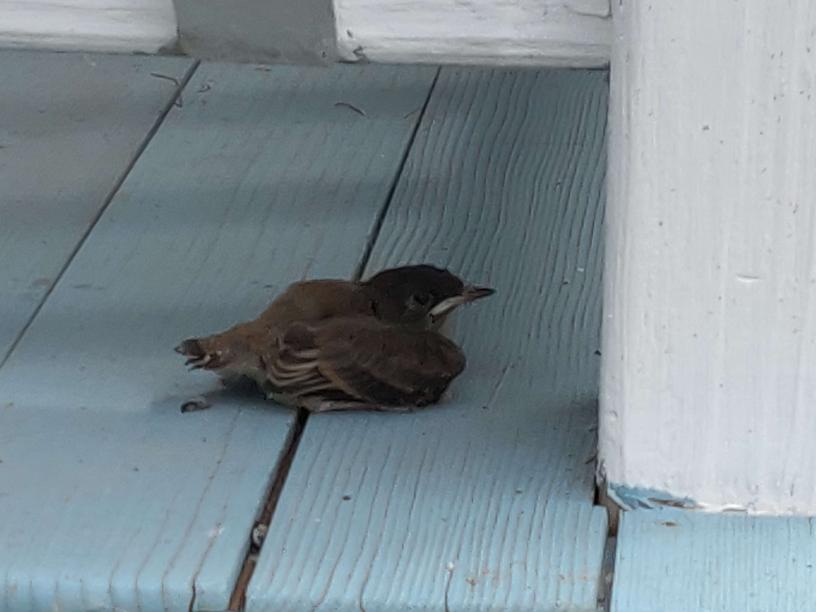 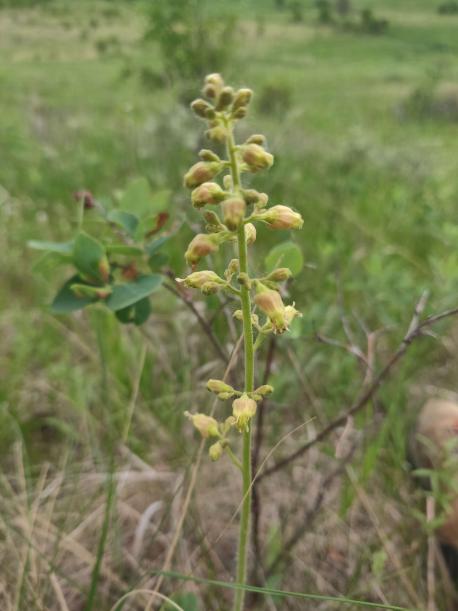 On a hill planting milkweed We know each plant’s mother. From every milkweed seed, Distinct one from one another. ____ Chocolate cake and thin mints For Alex’s last day! We’ll try to follow in her footprints And maybe make her stay. ____ Experiments in efficiency- Catching bugs the best way Practice until proficiency How do you catch bugs and make them stay…? ____ Emergence traps! are tents for bugs That they can not get out of So we can see each fuzzy mug And identify and count them up all up so we know which ones appreciate a post fire environment and which ones do not. 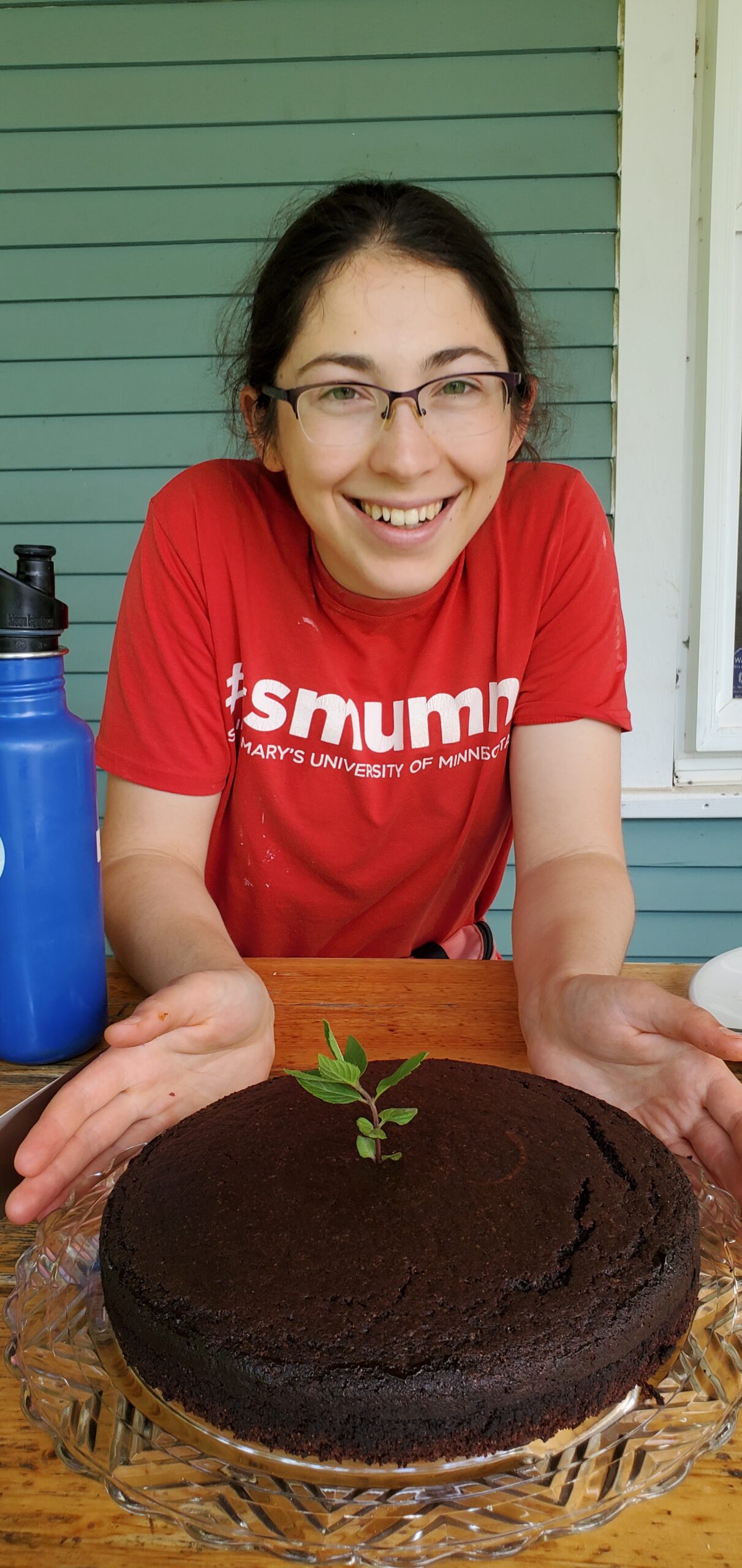 Around 80 8th grade students from Morris Junior High came by and learned about tools used in prescribed burns, plant identification, how to develop hypotheses, and methods for finding and trapping native bees!  Meanwhile…Other members of the team established points for our ENRTF-funded pollinator project, a rare species (Teeny catus) was spotted at the Hjelm House, and we all had watermelon at the end of the day to cool off.   Today we were visited by Dr. Matt Kaproth, who came up from Minnesota State University Mankato! He is interested in investigating soil properties in our ENRTF pollination study, and we will hopefully see more of him this summer as he samples our sites! The weather quickly turned stormy, so the team is now stationed at Hjelm, glued to our weather apps.  “Funding for this project was provided by the Minnesota Environment and Natural Resources Welcome back to this week’s episode of “What’s Flowering at Staffanson?”, where I will report to our avid flog followers the current blooms at one of our most beloved remnant prairies. Pasqueflower (Anemone patens) is still flowering in some parts of the preserve, but most of the plants are producing fruits by now. 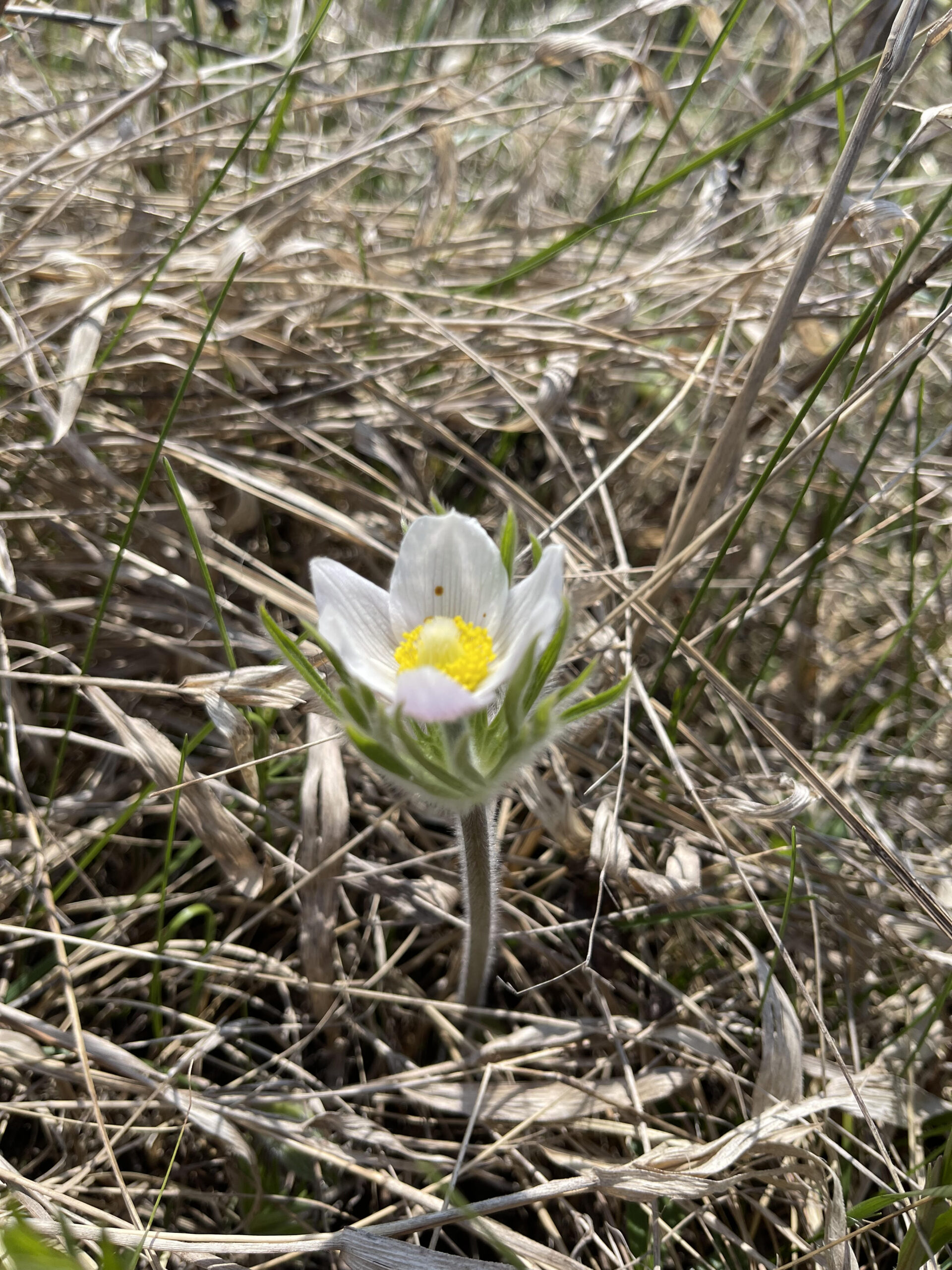 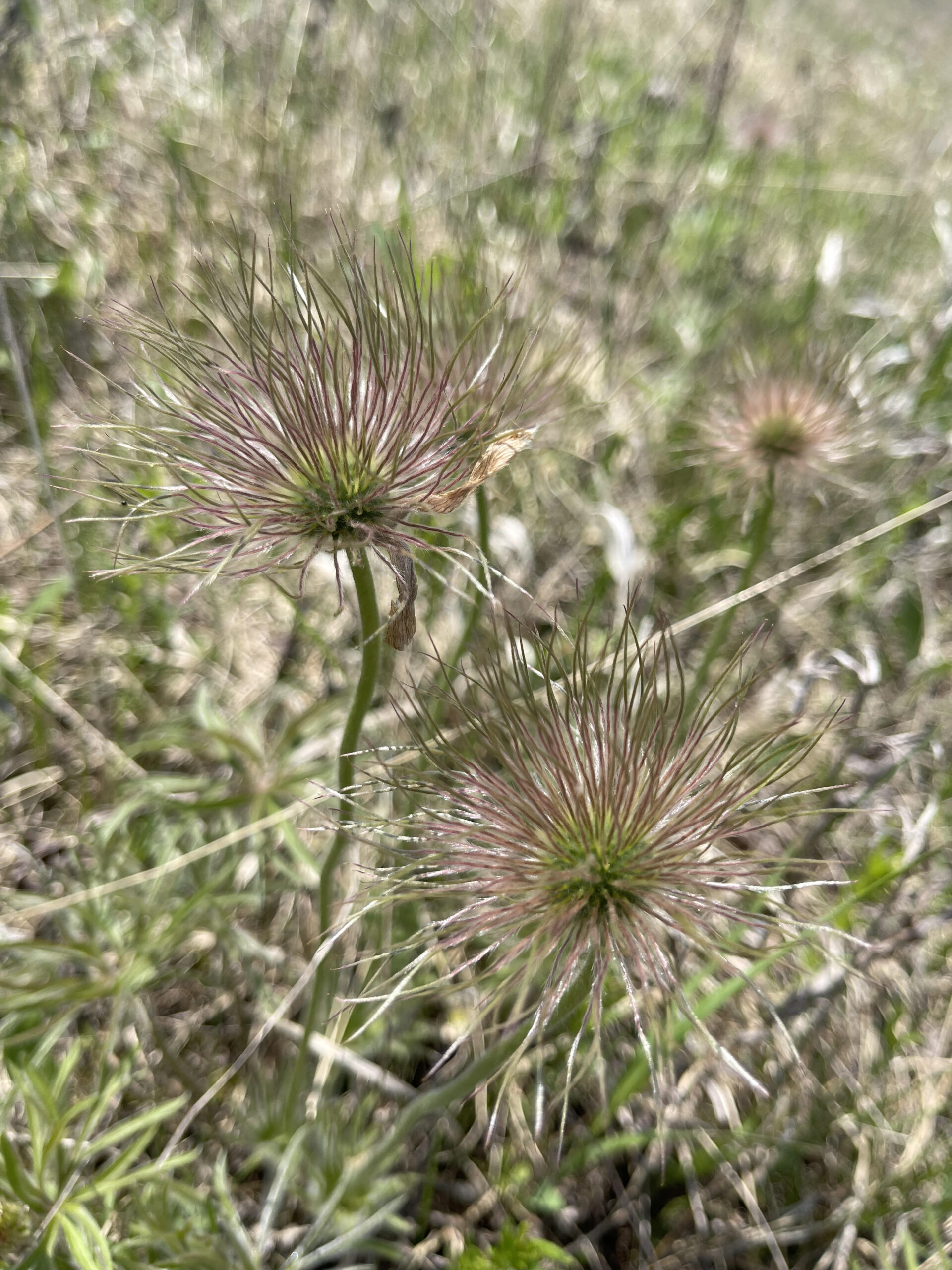 Next up we found some prairie buttercup (Ranunculus rhomboideus) 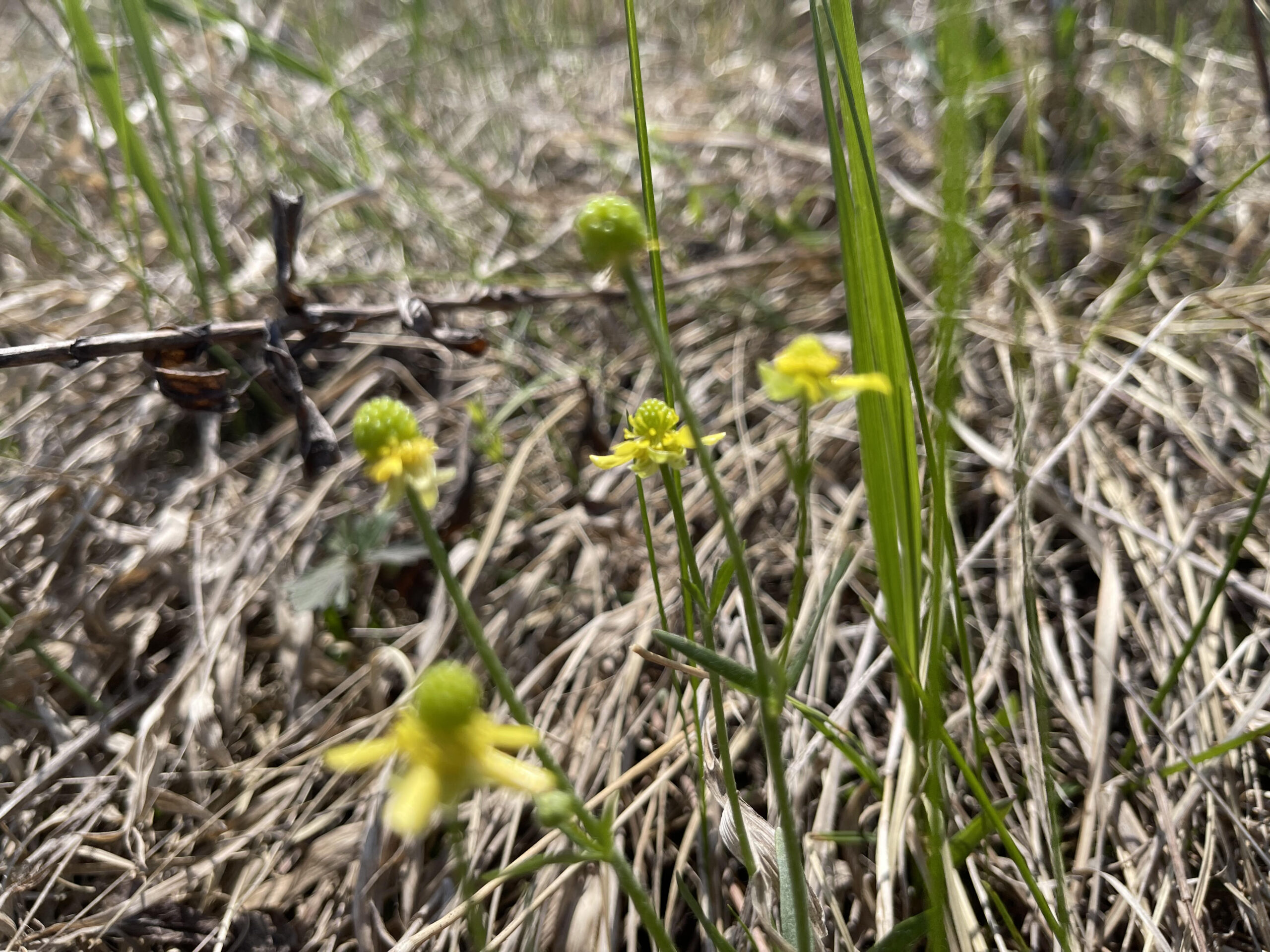 Jared wanted me to get a photo of Carex media, but like the photo above, my phone camera wouldn’t focus on the slender sedge (I tried, I swear!). So, picture everyone’s favorite sedge ~here~. Meanwhile, I can show you a non-blurry photo of violet wood sorrel (Oxalis violacea). 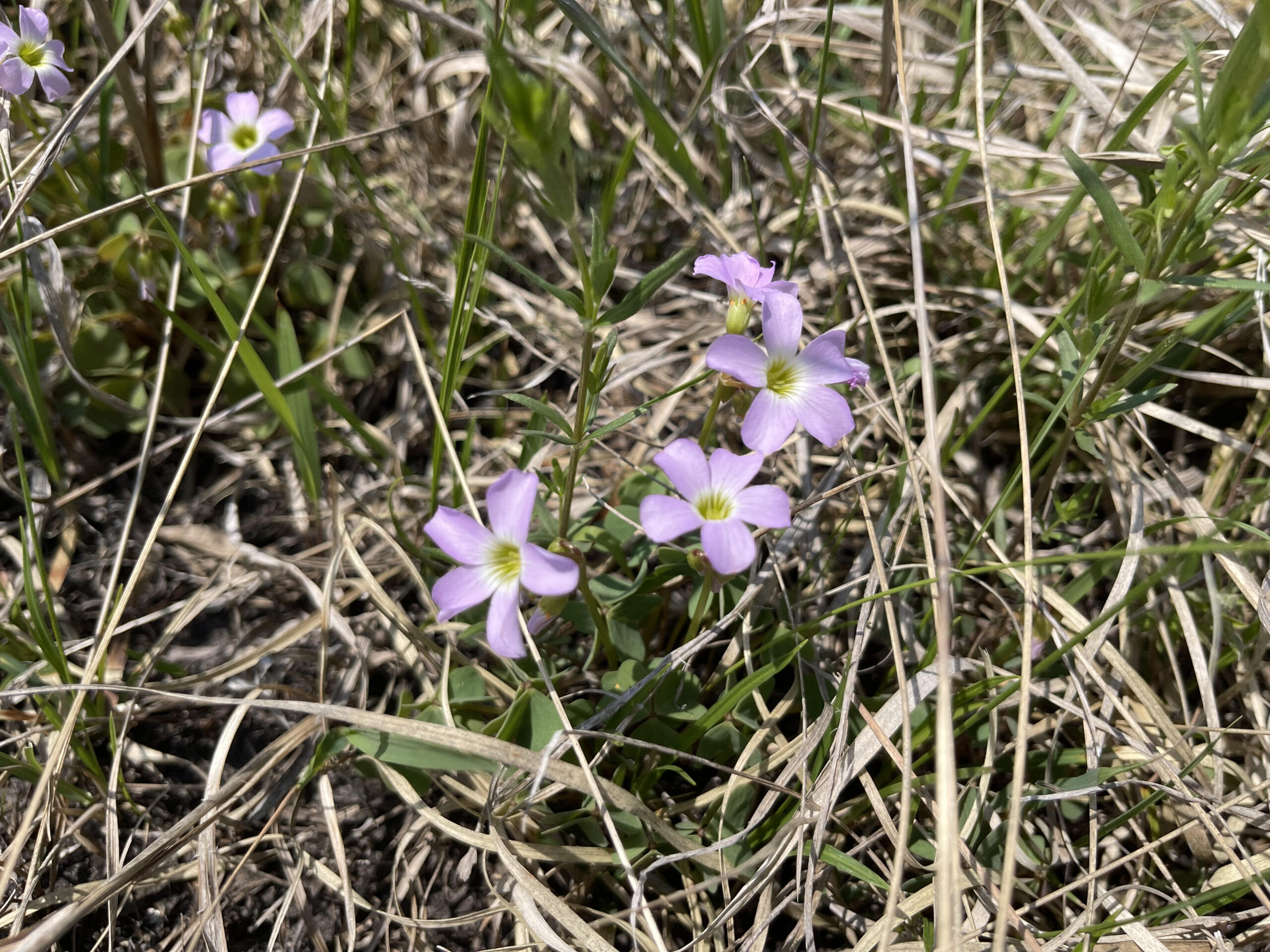 We saw a handful of heart-leaved Alexanders (Zizia aptera) beginning to produce their yellow umbels (or umbellets?). 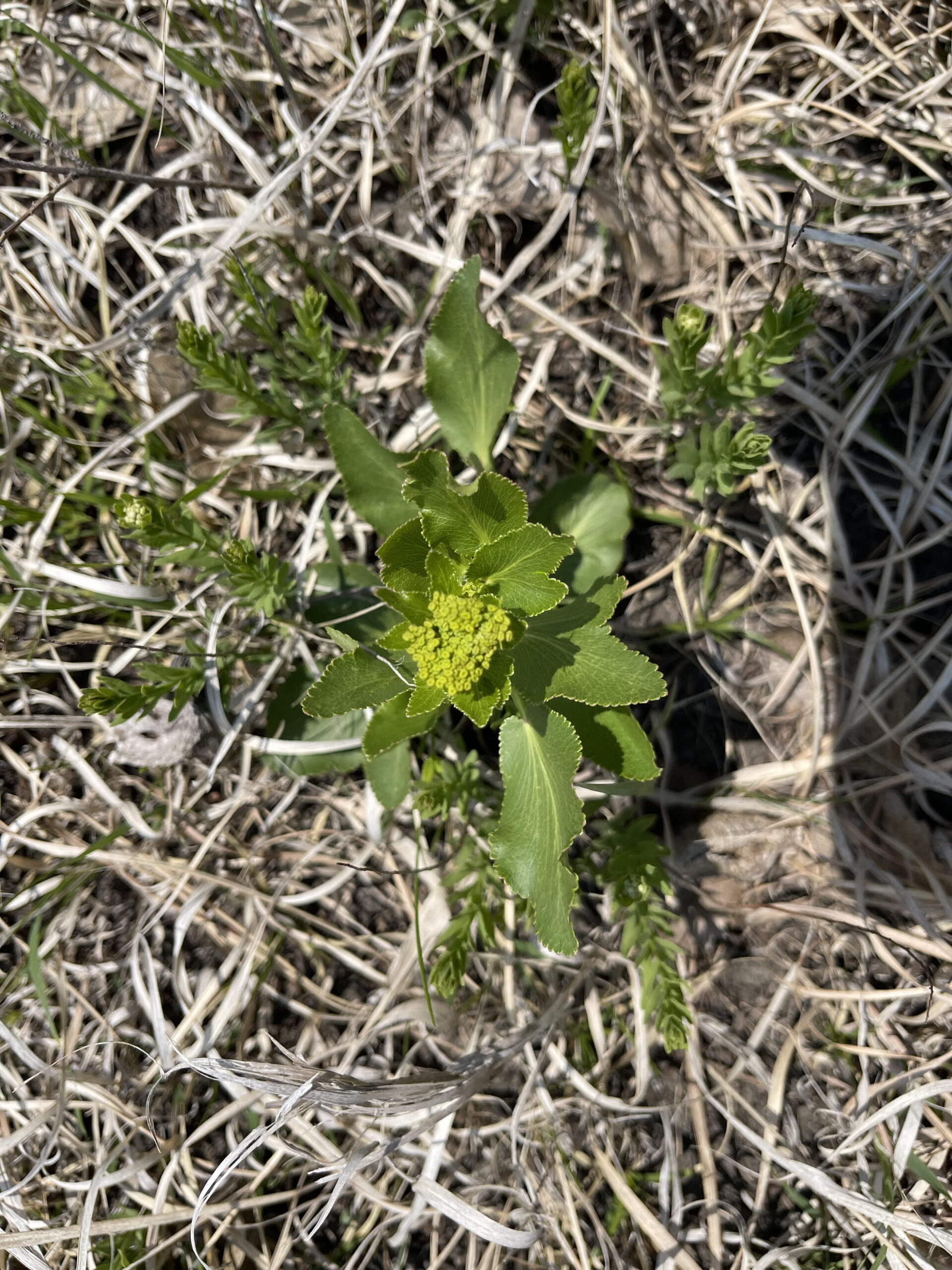 For some hemi-parasitic representation, we saw bastard toadflax (Comandra umbellata). Actually, we saw loads of Comandra, it seemed to cover large portions of Staffanson! 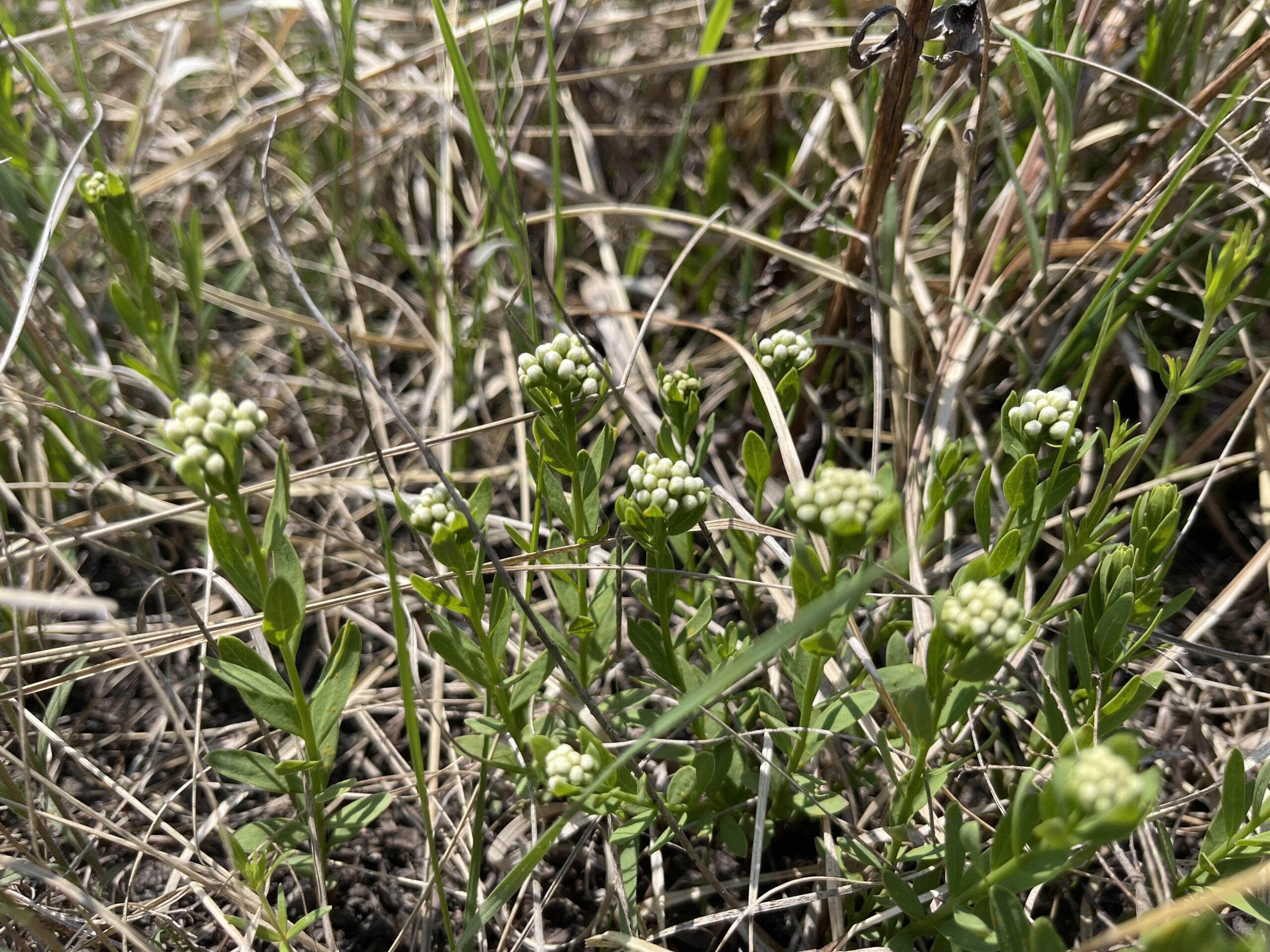 Hoary puccoon (Lithospermum canescens) was just beginning to show its Kraft mac-and-cheese-like colors. 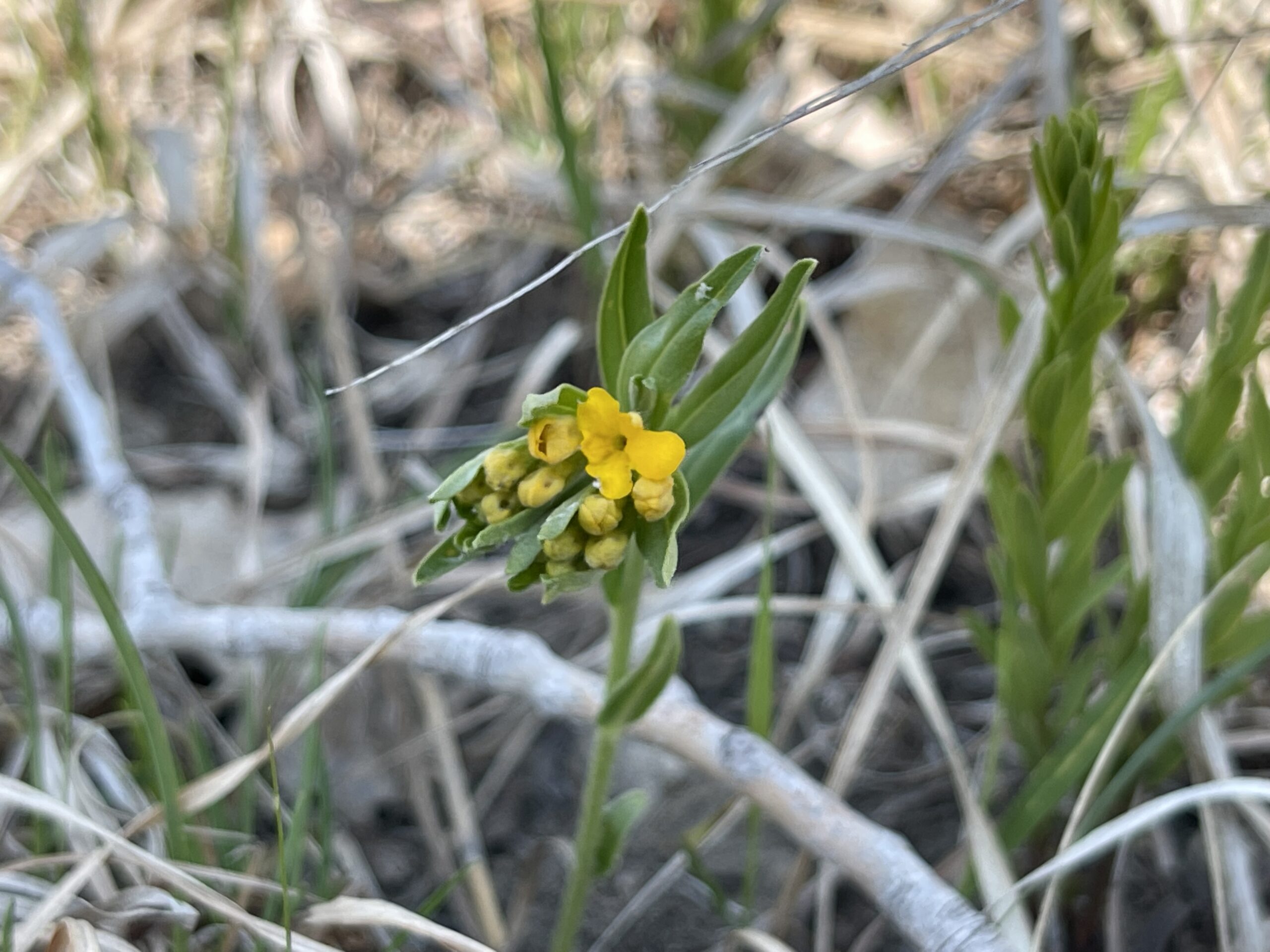 Perhaps my favorite photo of the day was of prairie violet (Viola pedatifida) and its dark purple striped veins. If you look closely, you can see Jared admiring the landscape in the background. Or is it Jared…? 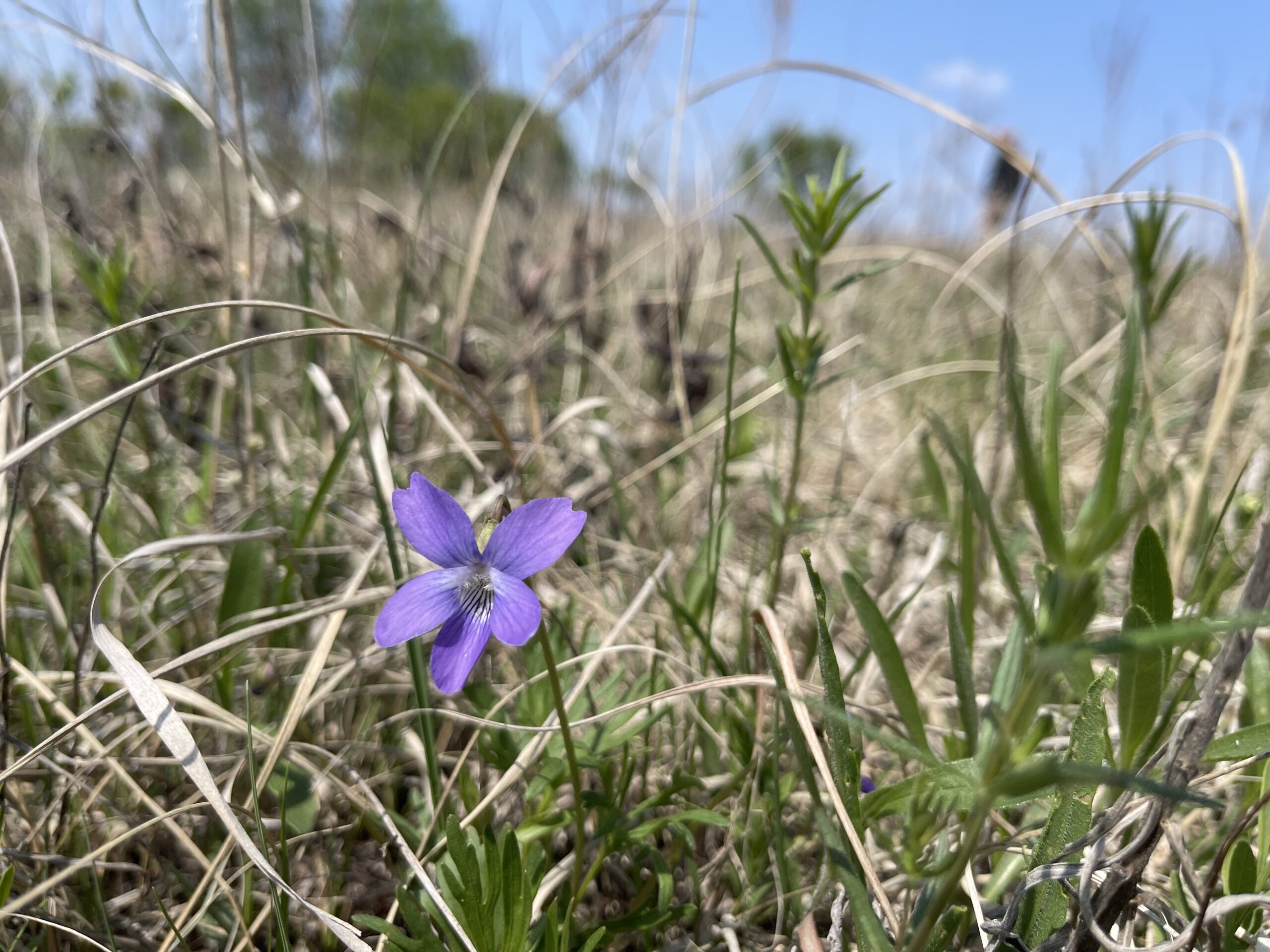 The true mystery of the day was the usually-abundant prairie smoke (Geum triflorum). We ventured all the way to the west end of Staffanson before we found a plant. While I appreciated the treasure hunt, I wonder why it’s a poor year for prairie smoke! 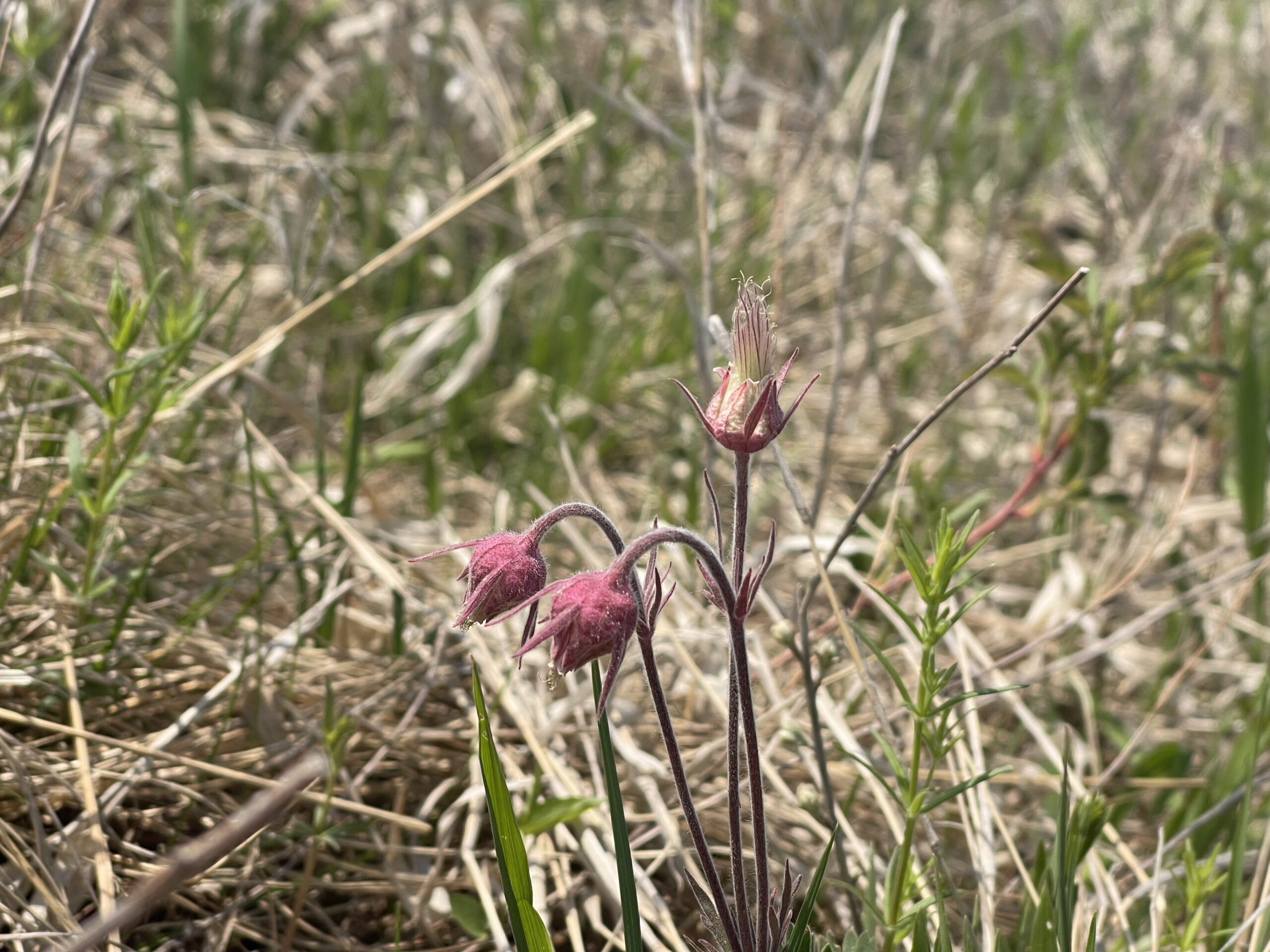 I made all of these observations of Friday, May 19th. I’m excited to return to Staffanson in a few weeks and see how the prairie has changed! |
||||
|
© 2024 The Echinacea Project - All Rights Reserved - Log in Powered by WordPress & Atahualpa |
||||